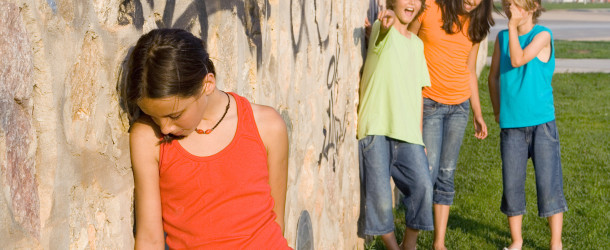 “I Just Tapped and Walked Away”
“I Just Tapped and Walked Away”
Thought Field Therapy and Bullying
By Dr. Victoria Yancey, TFT-DX, TFT-ADV
“You are fat, stupid and ugly.”This is just one example of the taunting that some students endure from peers and classmates. These and other harmful statements are instances of bullying. Bullying is a form of violence.
It is negative, aggressive and unwanted behaviors to cause harm, hurt or humiliation. It is anything that hurts another person, when things are repeatedly said or done to have power over that individual.
There are many types of bullying. There is racial bullying, sexual bullying and cyber bullying. Bullying includes name calling, saying or writing derogatory comments, purposely excluding an individual from activities, spreading lies and rumors, ignoring, threatening, doing anything to make another person feel uncomfortable or scared, stealing or damaging belongings of others, kicking, hitting, slapping, making someone do things they do not want to do.
When Thought Field Therapy (TFT) was taught to a group of students they reported using TFT when confronted with the violence of being picked on or bullied.
Children handle being bullied in many different ways. Those who are bullied are subject to peer pressure. Sometimes they end up doing something they really do not want to do in order to “fit in” hoping that the bullying will stop.
Those who are bullied often feel pain, fear or hurt. They lose self-confidence and feel lonely, scared and sad. They sometimes do not feel safe at school, home or at play and often have poor grades in school.
They may suffer from depression, headaches, stomach aches and other health problems and they may also have thoughts of suicide. Some feel it necessary to fight or bring a gun or weapon to school to stop the hurt of being bullied.
I worked with a group of middle school students who felt they where being bullied. The students where referred to me by their parents because they where getting into trouble in school. Many of the students were receiving declining or failing grades. Some of the students had either experienced detentions or suspensions, in or outside of school, for fighting.
When meeting with the students they explained the reason for their getting into fights was because they felt they were being “picked on.” They explained that a group of students constantly bullied them and they got into the fights because they felt angry and wanted to lash out against the bullying.
Statistics reveal that one out of every 4 students are bullied, picked on, or abused each month. In addition, thirty percent of students in the United States admit to being bullies, victims of bullies, bystanders (those who witness bullying) or have participated in all three roles (Olweus, 2001.
My work with the group began with explaining Thought Field Therapy after their discussion of anxiety and fear of being picked on and bullied and having to fight to try to solve this problem. The students rated their Subjective Unit of Distress (SUD) after tuning into the thought field. The SUD ratings ranged from ten or above for fear and anxiety to seven.
I began leading the students through Psychological Reversal to correct any reversals that may negatively effect the treatment. I then taught them the algorithm for General Anxiety and Stress, e (under eye), a (under arm) and c (collar bone). We checked the SUDs then continued by repeating psychological reversal and the majors since the SUD did not go down by two points for all in the group. We repeated the majors. This was followed with the 9 gamut since the SUDs subsequently lowered by at least two points for all students in the group.
We continued in this way until the SUD for each student was down to zero or one. The students reported feeling better, they explained feeling better meant that they where having fun doing Thought Field Therapy and they did not feel tense and angry when they thought about being picked on.
Studies show that the less confidence a student has the more likely they are to be bullied. The more confidence a student shows the less likely it is that bullying will occur (Fulker, 2010).
They continued to practice the steps of Thought Field Therapy until they learned the algorithms. The students agreed to use Thought Field therapy throughout the week when they felt like fighting, scared or feeling less confident.
When the students arrived the next week they were laughing and talking with a completely different affect from the previous week when they where somber, sad and angry. The students reported using Thought Field Therapy throughout the week. All of them explained that they did not participate in any fights during the week. They all told experiencing of tapping when feeling scared.
One student explained that she was able to concentrate on her school work and was able to pass her math test because for the first time she was able to study. But the most compelling comment came from one student who was constantly engaged in fighting and was on the verge of being expelled from school although she was the victim of bullying.
She stated, “I didn’t fight when some kids where picking on me. I just started tapping and walked away.”
Fulker, B. (2010). Help your child beat bullying and gain confidence. Birthmarks.com USA.
Olweus, D. (2001). Peer harassment: A critical analysis and some important issues. In Peer Harassment in School, ed. J. Juvonen and S. Graham. New Yor k: Guilford Publications.
Salmivalli, C. Lagerspetz, K. Björkqvist, K. Osterman, K. Kaukiainen, A. (1996) Bullying as a group process: Participant roles and their relations to social status within the group. Aggressive Behavior 22 (1-15).
Excerpted from “Tapping for Humanity,” Winter, 2014
